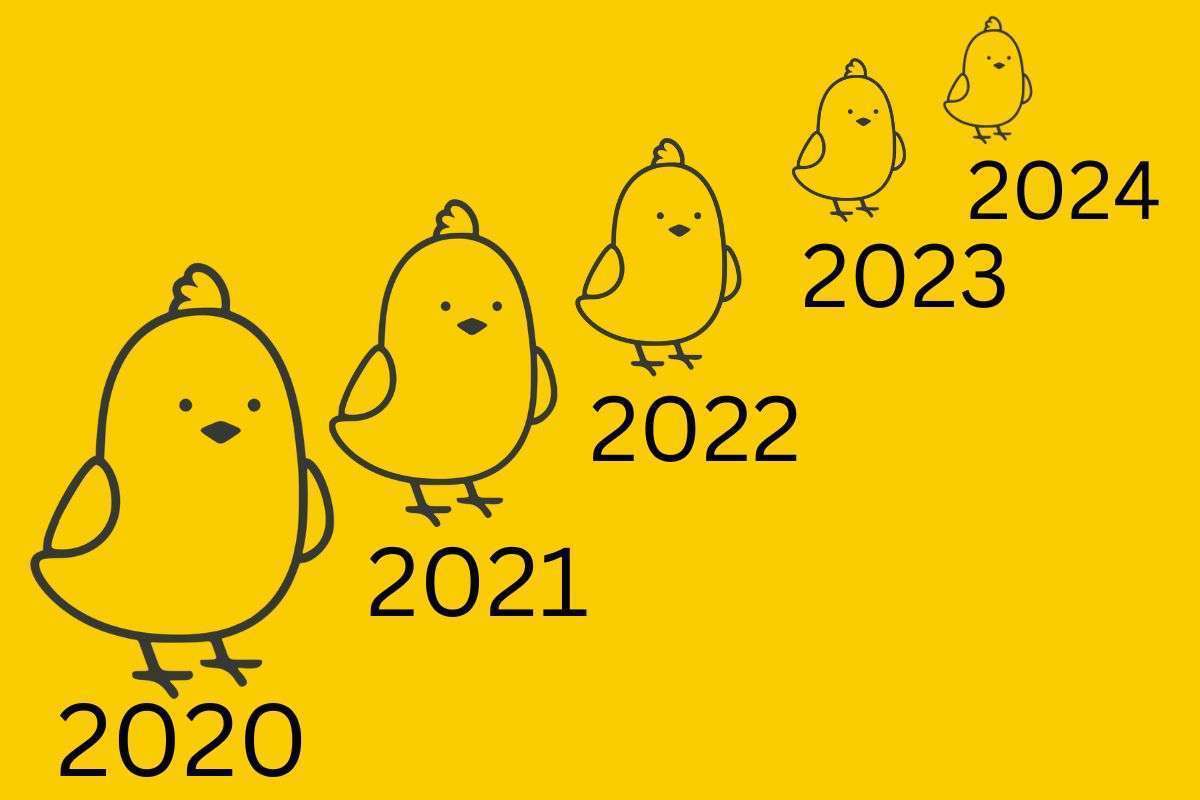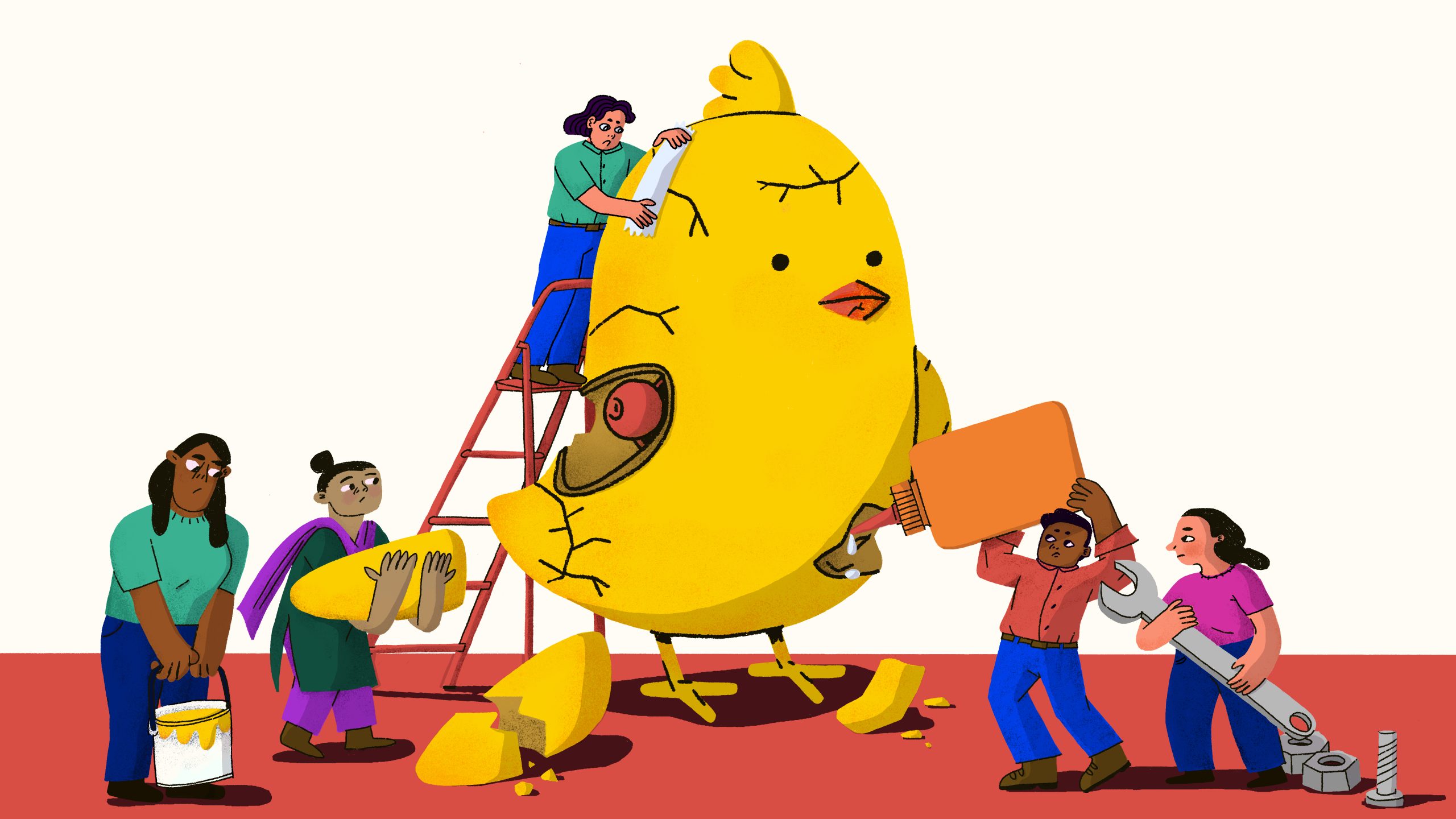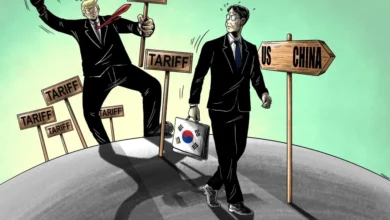The End of Koo: 7 Reasons Why Did The Little Yellow Bird Bid Its Final Farewell?

The little yellow bird says its last goodbye.
Tiger Global-backed Indian social media platform Koo, long regarded as a competitor to X (formerly Twitter), is shutting down operations, co-founders Aprameya Radhakrishna and Mayank Bidawatka said in a LinkedIn post. The co-founders asserted that this move was prompted by unsuccessful partnership discussions with big internet companies, titans, and media houses. Despite their intent to keep the app operational, the founders said the substantial costs associated with managing the social media services were a decisive parameter behind their tough decision.
But once this little bird Koo was having its moment in the sun. At its height, Koo had-
- 10 million monthly active users.
- 2.1 million daily active users.
- In an interaction with a news website, Mr Aprameya Radhakrishna said the platform has the potential to reach 1 billion.
Koo was at the right place at the right moment, so it took advantage of the chance.
The Bengaluru-based company is claimed to have benefited from disagreements between Twitter and the Indian government about faulty content regulation, which resulted in many celebrities, government officials, and people switching from Twitter to its indigenously constructed counterpart, Koo. In February 2021, the Indian government and X clashed over the shutdown of farmer protest-related accounts. As tensions rose, the ruling party ministers and, eventually, their supporters moved to Koo. This gave Koo a sizable roster of over 9,000 VIPs, including well-known figures from various areas. After obtaining nearly $66 million from investors, including Accel, Tiger Global, Mirae Asset, Kalaari Capital, and 3one4 Capital, Koo’s latest estimated valuation was $274 million.
Many people believed that X had finally found a rival in the nation, one supported by the government. However, the wave of happiness took only three years to haunt like a storm. Just as the business was at the top of its game, funding dried up, severely slowing down its expansion rate. Since last year, Koo has had trouble getting fresh funding, which has led the business to look for platform mergers. None of these conversations, though, succeeded. As of 2024, Koo is all set to say the final good bye.
What happened so drastically that the loud, boasting cute little yellow bird Koo muted forever?
A company needs to have one of the following attributes to be attractive to investors-
- Feature or use case that makes it unique- The MOAT.
- Growing user base and active users.
- Robust monetisation model.
According to industry sources, Koo does not have any of these.
Reason 1: Lack of any MOAT– The ‘vocal for local’ app has nothing unique.
While Koo first gained popularity and was described as a Twitter rival and a “government-friendly social media network,” industry sources stated that it did not provide anything unique. Furthermore, unlike its worldwide competitor X, Koo lacked a unique use case, they claimed.
Koo co-founder Mayank Bidawatka once said at the start of 2021 that by the end of 2021, over 100 million social media users in the country will be ‘koo’ing in a number of Indian languages. However, the startup has not taken any significant strides towards reaching this milestone, which is vital in the social media game.
X is a site where media breaks/shares news, customers complain about customer service, and, as we’ve seen in recent cases such as COVID-19 or floods, a platform for crowdsourcing assistance in times of need. Koo didn’t have any of these. As a result, user numbers dropped, and engagement was reduced. Koo’s monthly active users (MAUs) have been on a decline, according to reports. Koo’s MAUs reportedly declined to 4.1 million in January 2023, down sharply from around 9.4 million in July 2022.
Building a social platform is a really difficult business. Take Facebook, Instagram, Snapchat, and Twitter. They are distinct products with separate use cases and demographic goals.
- Facebook is used to interact with friends and family and is popular among the elderly.
- Instagram is largely utilised for sharing lifestyle, fashion, and travel material.
- Snapchat is popular among young people.
- Twitter, while having a smaller user base than the others, is a powerful medium utilised by media companies and enterprises.
Koo’s only distinguishing feature is that it provides material in regional languages. According to the founder of a content platform, “Most platforms offer regional-language support, which is no longer a differentiator or a unique feature that Koo can bet upon. They can do whatever they want with Koo on X as well, so why will they be attracted to this yellow bird when X is all doing well?

Furthermore, X represented more than merely microblogging. The network is utilised to communicate with a wide range of users, including former External Affairs Minister Sushma Swaraj, who was known for her Twitter diplomacy, as well as police agencies and companies. For instance, if you have an issue with your passport, you tweet about it; or if you are unhappy with the bank’s customer service, you tweet about it. If you have a problem with a product or service, you may report it on Twitter. What is Koo’s use case- the answer hounds a big NOTHING MUCH.
Nishant Mittal, a serial entrepreneur who previously built the social networking platform Cread, notes, “The major issue with Koo is that it does not provide any unique feature, nor does it aim to be, but rather a copy of X. This may be a fantastic college project, but it’s not a reliable business.”
Reason 2: Lack of network effect.
These are some of the variables that contribute to continual increases in downloads and user base. In the context of social media, this is known as the network effect. It is a key factor for a social media network’s monetization and funding.
According to analysts, there were several reasons why Koo could not capitalise on this support base. Take X, for example. According to a TechCrunch article, X increased its weekly active users from 50,000 in April 2007 to 100,000 in January 2008, then doubled them again in March 2008. Twitter had 35.47 million monthly active users in 2009, three years after its start. Similarly, Instagram’s user base surged by 1 million in just three months after its launch in 2010 and 10 million in 2011.
This steadily increasing spike in the number of users is known as the network effect, which occurs when the value of a product or service improves as the number of users grows. Unlike Twitter and Instagram, which had constant user growth in their early years, Koo’s user growth has already slowed three years after its founding.
Reason 3: Financial review doesn’t sound like a ‘sound Koo’.
Koo generated INR 4.9 crore in revenue in FY22, up from INR 80 lakh in FY21. In this period, revenue from operations was INR 14 lakh. However, its expenditures and losses increased. The company’s costs for FY22 were INR 202 crore, up from INR 24.8 crore in the previous year. Its losses climbed dramatically, from INR 35.2 crore in FY21 to INR 197.1 crore in FY22, a jump of nearly 460%.
With a mere operational income of INR 14 lakh and a stunning INR 197 crore loss in FY22, the firm has struggled to find a revenue model and is largely reliant on capital burn to acquire new users. Koo did manage to reduce its monthly cash burn to around Rs 10.2 crore in April 2023 from roughly Rs 16 crore in January 2023, according to a news website report. The monthly cash burn of Rs 10.2 crore in April 2023, however, is far from the target of Rs 6.5 crore Koo had set for itself by March-end of that year.
Reason 4: Weak advertising model- A comparison, Koo v/s X and Decrease in MAU.
The social media industry, which is mostly based on advertisements, is not viable in the nation. Meta and its suite of products, which includes Facebook, WhatsApp, and Instagram, as well as Google’s search engine, contribute to a sizable portion of the country’s ad income.
Koo experimented with advertisements and loyalty programmes to incentivise producers with ‘Koo Coins’. With a decreasing user base and engagement, the firm could not increase its monetisation efforts. In comparison, X has also been unable to discover the correct path to financial success. In July 2023, Elon Musk disclosed that the company had lost half of its advertising income since he purchased it and appointed Linda Yaccarino as CEO to focus on its ad business.
According to a survey by market intelligence platform Sensor Tower, Koo’s MAU increased by 24% month after month at the peak of 2021. Market research firm Statista estimated Koo’s MAU at 4.7 million in April 2021. By November 2022, its downloads had reached 50 million. However, according to the survey, month-on-month usage has stayed relatively stable since then. Despite its popularity, the company has been unable to maintain its growth rate since its active user base has begun to drop.
The data also showed that, despite changes and upheaval at X, the platform excelled Koo. In 2022, Sensor Tower reported that X’s average MAUs climbed by 3%, while Koo’s remained unchanged year on year.
The launch of Meta’s Threads in July 2023 had a greater influence on Koo than it did on X. While X’s downloads grew 23% year on year, Koo’s downloads fell 85% year on year in July 2023, according to Sensor Tower study.

Reason 5: Big tech companies returned to haunt the little yellow bird.
During the COVID-19 pandemic, the Indian government promoted self-reliance, or Atma Nirbharta, as a slogan for all products and services, including digital ones. While Twitter clashed with the Indian government over several crackdowns and rules, Koo swiftly gained traction. Prime Minister Narendra Modi referred to the app as an iconic ‘Made in India’ product. Soon after its introduction, Koo won the government’s Aatmanirbhar Bharat App Innovation Challenge. When Twitter banned several influencer accounts for rules infractions, Koo quickly became the go-to alternative.
However, the big players do not make it so easy to make the roads for the new ones.
Platforms like Koo are horizontal social networking apps. Users have diverse interests and communities. In such a setting, Koo marketers encountered difficulty in attracting advertising. The simplest way to do this is to increase the number of users, which Koo did by aggressively targeting Indian celebrities. Even if it requires spending money on user acquisition in a competitive market. Aside from that, it targeted accounts with big regional language followers.
The app first collaborated with the Tamil Nadu Cricket Association for the fifth season of the Tamil Nadu Premier League (TNPL). According to the deal, TNPL will offer live information on Koo via its official Twitter. It included interaction elements and innovative contests with TNPL merchandise as prizes.
Koo and Ogilvy India teamed in October 2021, at the commencement of the T20 World Cup, to launch a massive TV campaign with the tagline #KooKiyaKya.
Like Ask Me Anything (AMA) sessions on X or Reddit, Koo started organising AMA sessions in local languages, targeting certain groups to increase interaction. Several celebrities and influencers have also invested in Koo.
Politicians and government organisations were also prime targets for Koo. It enlisted the help of union cabinet members, state governments in Uttar Pradesh and Telangana, institutes such as the Central Institute for Indian Languages, and others to drive organic user acquisition. Between July 2021 and July 2022, Koo organised more than a dozen significant initiatives to improve user numbers and engagement, hence attracting more advertisers. It also designated about 8,000 persons as “people of eminence” on Koo. In October 2022, Koo also introduced a loyalty scheme called Koo Coin, which rewards consumers for continually using Koo.
After winning the Atmanirbhar Challenge in 2020, Koo received acclaim from Prime Minister Narendra Modi at his weekly Mann ki Baat address. Prominent ministers in his Cabinet, as well as major voices in the ruling dispensation, aggressively supported Koo, particularly when Twitter refused to remove specific accounts during the farmer protests.
According to an Ad Library analysis, Koo spent the most money on political advertising on Facebook between 2019 and 2023, spending INR 7.2 crore. The Indian Political Action Committee and the Bharatiya Janata Party spent INR 5.8 crore and INR 5.6 crore, respectively.
The yellow bird featured advertisements for Groww, UCO Bank, Droom, Snapdeal, Amul, HDFC Securities, Bajaj Group, and Fortis Healthcare. However, this was the peak moment for apps like Koo, and big tech eventually returned to dominate social media advertising. Koo, like Sharechat and Trell, struggled to retain advertisers in the way that Twitter and Instagram did.
This was the power that big titans had in terms of huge advertising budgets.
Reason 6: The lack of an organised customer base.
The brands collaborate with platforms for advertising. This could have been one of the best ways for Koo to grow cash through advertising revenue. However there, the little bird missed the point. Brands sought to reach out to their target audiences. Most companies require a focused user base, but Koo’s was diverse. There wasn’t a single user group that could dominate and appeal to advertising everywhere, and hence, Koo lost this aspect. Despite the relatively low cost of advertising on Koo, the ads did not receive the required degree of attention or impressions. Koo did not develop the necessary ecosystem to attract advertisers successfully.
Other analysts questioned why brands would spend more money on another platform when Twitter provides greater statistics, performance monitoring, and a larger network. This created obstacles for expansion and scaling up.
From the user’s standpoint, Koo provided no competitive advantage over X. Aside from commercials, the introduction of subscription models such as Koo Premium (priced between INR 6 and INR 30 per month) was inadequate to balance the company’s accumulated losses.
Reason 7: Funding nights in Indian startups- Lack of relevance kept the investors away.
Once last year, Bidawatka posted, “With the current reality of a slow investor market, the best way forward is to partner with someone with the distribution strength to give Koo a massive user impetus and help it grow. With a platform that’s scale ready, the yellow bird can outshine competitors with the right push on growth.” He asserted if Koo had “6 months on its trajectory”, it would have beaten Twitter in India and that it was also caught up in the funding winter. He further added that the company had to focus on revenue generation instead of investing in growth at the back of funding winter.
The question is of relevance. As a creator of a news aggregation company remarked, if there is already a platform for uploading and consuming material, what does Koo offer? Why should one inject their funds into Koo, with declining user base?
Mohandas Pai, an expert, says that one of the most difficult difficulties for Indian startups is raising funds. While seed and Series A funding is simpler to obtain, he believes it is more difficult to get larger checks, which are required for firms to flourish and develop rapidly. In Koo’s example, he stated that while the site still has a significant user base, “they need money to invest and monetise.” He went on to say that because Indian entrepreneurs lack diverse sources of financing, such as large-scale involvement from institutional investors like LIC or family offices, when funding dried up, it affected them.
Why does the audience love the yellow bird when they are doing good with the blue, or the X?
By the time Koo became popular in the market two years ago, X had established itself as the preferred platform for the media, politicians, and celebrities, and everyone was looking for a place to complain or just be heard. It is difficult to adapt, even with government assistance. Once a site achieves scale, it becomes harder to change its audience. Also, when people spend years on a social networking platform, it becomes a difficult habit to quit.
Furthermore, users who have already established a network and a newer network with identical features will need to map the correct audience and replicate the network effect, which is incredibly difficult to achieve. That also explains why not only Koo but also Threads has already lost momentum, whereas X continues to grow.
This lack of relevance does not simply apply to Koo. Some prominent Indian social media services, which are clones of global social media applications such as Moj and Josh, have historically lost users to Instagram Reels and YouTube Shorts, and monetisation remains a struggle for these platforms.
However, here Mr Pai disagrees. According to him, this has little to do with being comparable to their Western counterparts, given that Indian companies have raised only a fraction of the funds. “Everything is a replica of everything. Every e-commerce firm is an Amazon clone, and this is a separate issue. However, there is enough innovation going, and the major impediment is money,” he noted.
However, not everyone agrees that the problem is solely with money.
There’s an even broader question: do we really need social media that’s “made for Bharat”? Asked a Bengaluru-based investor. There are social media sites for communicating with friends and family (WhatsApp, Facebook), connecting with others (X), and sharing videos (Instagram, YouTube). People seldom have time to keep up with these. They definitely don’t need another.
This may answer why its existing or new investors refused to throw a lifeline or if Koo’s narrative was not good enough for an acquisition or, as Bidawatka puts it, a “strategic partnership”.
However, the onset of death of the yellow bird can be felt from the layoffs itself.
Prior to the ecosystem-wide layoffs in 2022, Koo employed about 400 individuals. Since then, the company has let eliminated people in several waves. By April 2023, Koo told media that it had laid off 30% of its staff. The firm had previously laid off 5 % of its workforce in August 2022. So, why did the company suddenly hit the brakes? Simply put, marketing and advertising investment yielded insufficient returns, resulting in excessive cash burn and little revenue growth.
The firm has raised $30 million by May 2021, with another $3.5 million in December 2021 and another $6 million in December 2022. Despite approximately $40 million in capital, the firm reported only a few lakhs of rupees in revenue. For example, the T20 World Cup campaign, which was extremely costly, had disappointing results. Most advertisers did not remain with Koo for multiple months, resulting in a drop in income in certain months, says one former employee. In an October 2023 LinkedIn post, Bidawatka stated that Koo was trapped in a sour market and had to shift its focus from growth to revenue. Easier said than done.
Back to X, keeping the yellow bird in distress.
However, this shift in focus did not necessarily move the needle. Given this, how was Koo going to make a dent in Twitter’s inconceivably powerful worldwide network effects? Forget about network effects.
When Twitter was under government action, pro-government accounts left to join Koo, and many of individuals who had been blocked from Twitter did the same. However, shortly after taking over Twitter, Musk unblocked the majority of these accounts, and many users returned to X. A similar event occurred in Nigeria, where the authorities blocked access to Twitter, and many Nigerians created profiles on Koo. However, once the ban was removed, these users returned to X, and their Koo handles became inactive. Losing these organically obtained users was a significant loss for Koo.
Hence, all these, including declining user base, losing organic audience, inability to provide unique to drag the customers from X, high cash burn rate, and all lead to the ultimate call of saying the final goodbye to the little yellow bird.




